
Culture
14:48, 17-May-2019
I.M. Pei: The architect whose creations stand the test of time
Updated
15:49, 17-May-2019
By Ai Yan
01:32
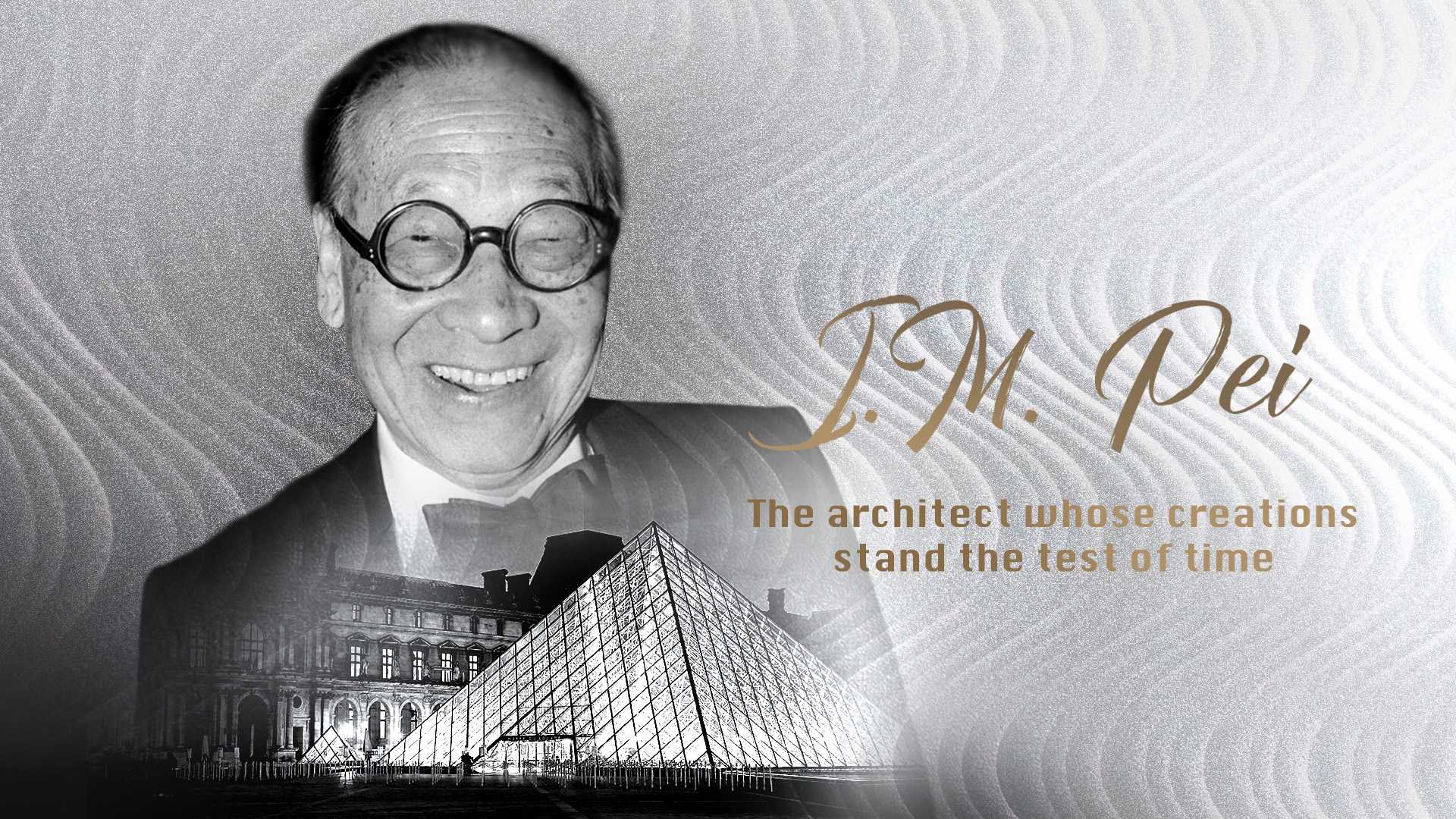
I. M. Pei, world-renowned architect, creator of the Louvre Pyramid, the U.S. National Gallery of Art and China's Suzhou Museum, died at the age of 102, his son Chien Chung Pei confirmed on Thursday.
His works include skyscrapers, art museums, concert halls and are scattered around the globe, in areas which have diverse cultural backgrounds, histories, traditions and standards of aestheticism. And yet, even after initial skepticism and controversy, people always ended up admiring or worshiping Pei's designs.
“Mr. Pei, with his gracious but firm air, was one of the few architects who were equally attractive to real estate developers, corporate chieftains and art museum boards,” the New York Times wrote in their obituary.
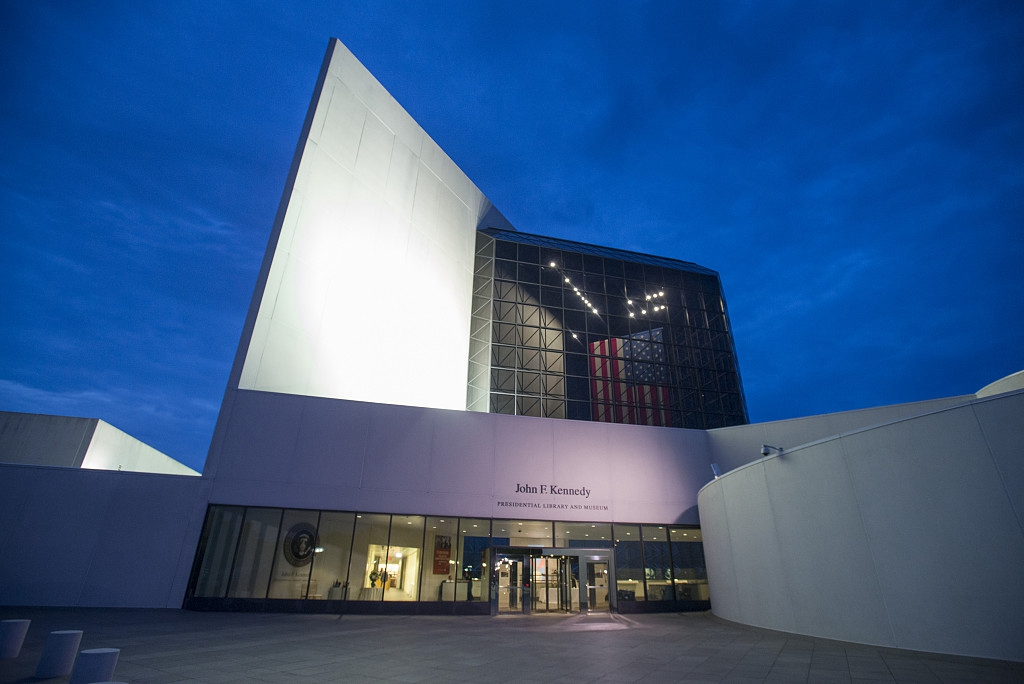
The John F. Kennedy Library and Museum in Boston, U.S. /VCG Photo
The John F. Kennedy Library and Museum in Boston, U.S. /VCG Photo
The pride of the master
I. M. Pei was born in Guangzhou City, south China's Guangdong Province in 1917. His childhood and adolescent years were mostly spent in Hong Kong and Shanghai.
Pei moved to the U.S. with his family in 1935, and shortly after receiving a master's degree from the Harvard Graduate School of Design, he joined William Zeckendorf's company, where he worked for seven years, before starting his own firm.
Pei's works are distinct with their neat and reserved outlines, the applications of geometric art, which combines modernism with a tinge of conservativism to perfectly fit architecture into its environment with its own particular history and tradition.
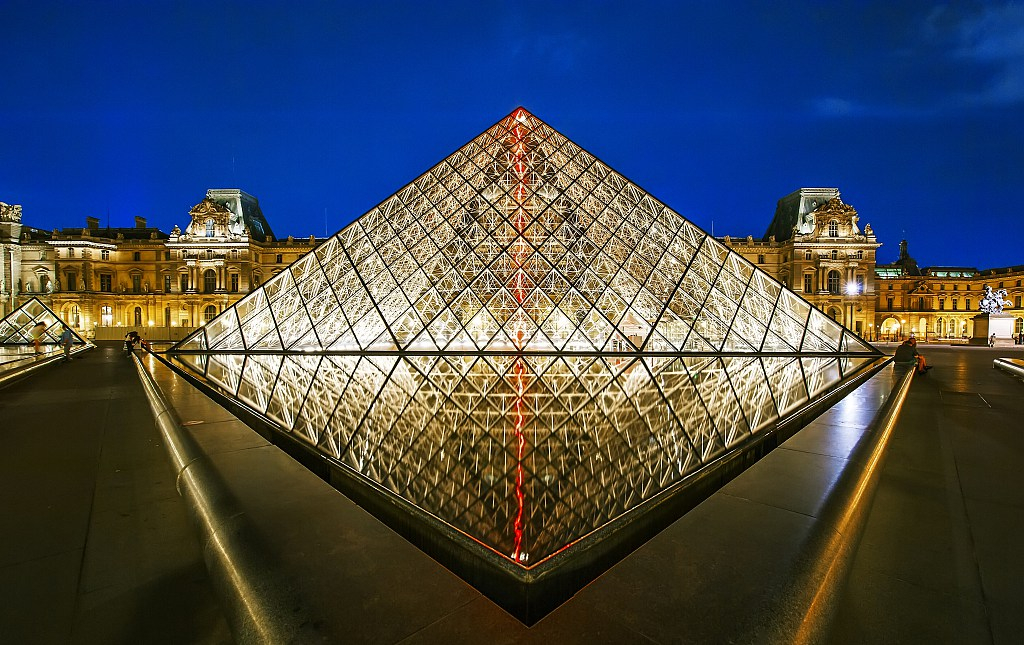
The Louvre Pyramid outside the Louvre Museum in Paris, France. /VCG Photo
The Louvre Pyramid outside the Louvre Museum in Paris, France. /VCG Photo
One of his most widely recognized works, and probably the most controversial work as well, is the glass pyramid outside the Louvre.
The glass-walled pyramid, together with three smaller ones nearby, has now served as a grand entrance to the museum. When it was first built in 1989, the project drew tons of criticism and mockery.
Local media described it as “an annex to Disneyland,” or “a scar on the face of Paris.” An environmental group said the structure belonged into a desert.

Deutsches Historisches Museum in Berlin, Germany. /VCG Photo
Deutsches Historisches Museum in Berlin, Germany. /VCG Photo
Compared to the traditional French style of the Louvre, the architecture of glass and steel seemed like from the future. However, under the support of the then French President Francois Mitterrand, Pei completed the pyramid, and it has now become an indispensable part of the Louvre and a landmark of Paris.
Pei seldom explained the ideas behind his architectural designs, and yet he always insisted with his designs. As he said, what he valued most in architecture was that it “stands the test of time.”
A root in China
Once, the architect was asked about the reason that made his architectural works so universally successful.
“Maybe because I am more patient,” Pei said, “because of me being Chinese.”

Bank of China skyscraper in Hong Kong, China. /VCG Photo
Bank of China skyscraper in Hong Kong, China. /VCG Photo
Pei has six pieces of work in China, including the Fragrant Hill Hotel and the Bank of China headquarters in Beijing, the Suzhou Museum in Suzhou City, the Bank of China skyscraper in Hong Kong, the Luce Memorial Chapel in Taichung City, and the Macao Science Center.
The Suzhou Museum, located at the center of the ancient city, was opened to the public on October 6 in 2016. When I. M. Pei returned to his hometown to attend the opening ceremony, many local residents said to him in local dialect: “Thank you, Old Pei!”
It is an informal way to greet an old friend, just like “old pal” in the U.S.
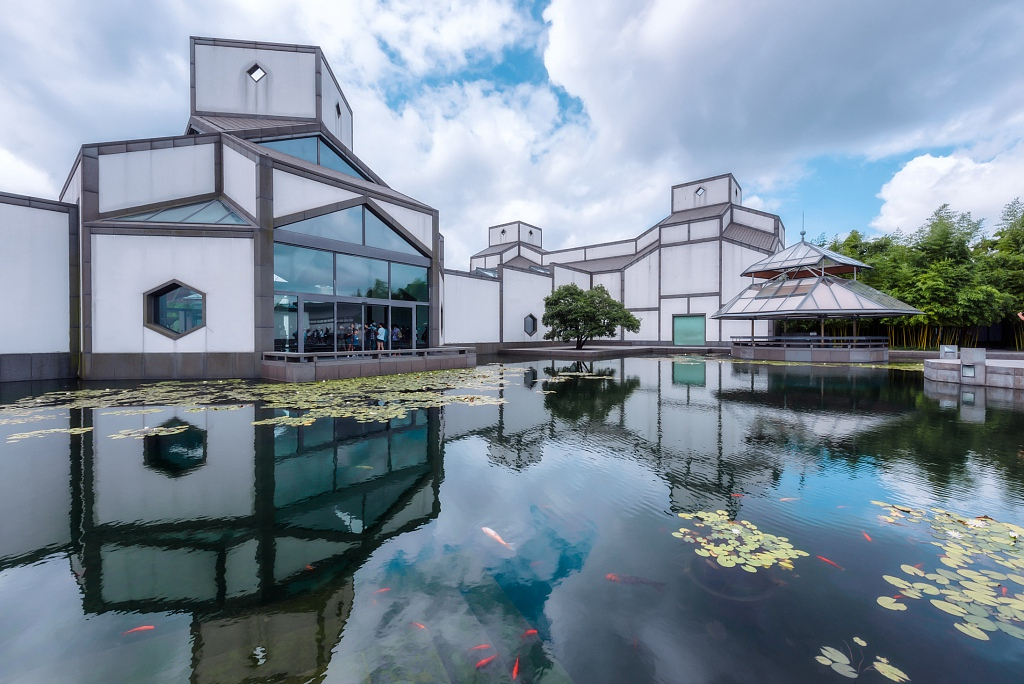
Suzhou Museum in Suzhou City, Jiangsu Province, east China. /VCG Photo
Suzhou Museum in Suzhou City, Jiangsu Province, east China. /VCG Photo
Pei's family was an ancient and distinguished clan in ancient Suzhou City, and the Lion Grove Garden, a representative site of the renowned Suzhou gardens, once belonged to the Pei family.
The ink-painting style of the Suzhou gardens clearly has become a source of Pei's inspiration in the designing of the Suzhou Museum.
The architecture adopts the traditional colors of white and grey as its main tone, while the traditional Chinese architectural elements, such as the application and combination of hills, plants and waters have been applied in a modern way.
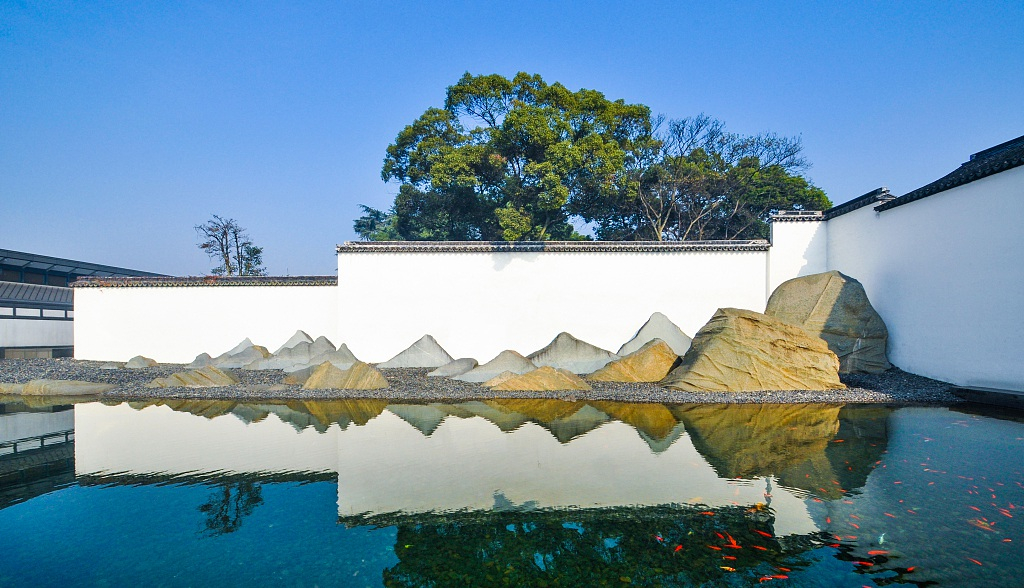
Suzhou Museum in Suzhou City, Jiangsu Province, east China. /VCG Photo
Suzhou Museum in Suzhou City, Jiangsu Province, east China. /VCG Photo
Instead of using the traditional wood as its material, however, Pei again preferred glasses and steels, especially for the ceiling and some walls, giving the exhibition halls a brighter and broader view while maintaining similar aestheticism of the ancient gardens.
Clearly, Pei has put painstaking efforts into the Suzhou Museum, and he called it “my little girl.”
However, for Pei, the Suzhou gardens are the creations at the peak of the Chinese aestheticism, and they could hardly be surpassed. But the traditions could be learned and renovated. As he once said, “be the best, not necessarily the most original.”
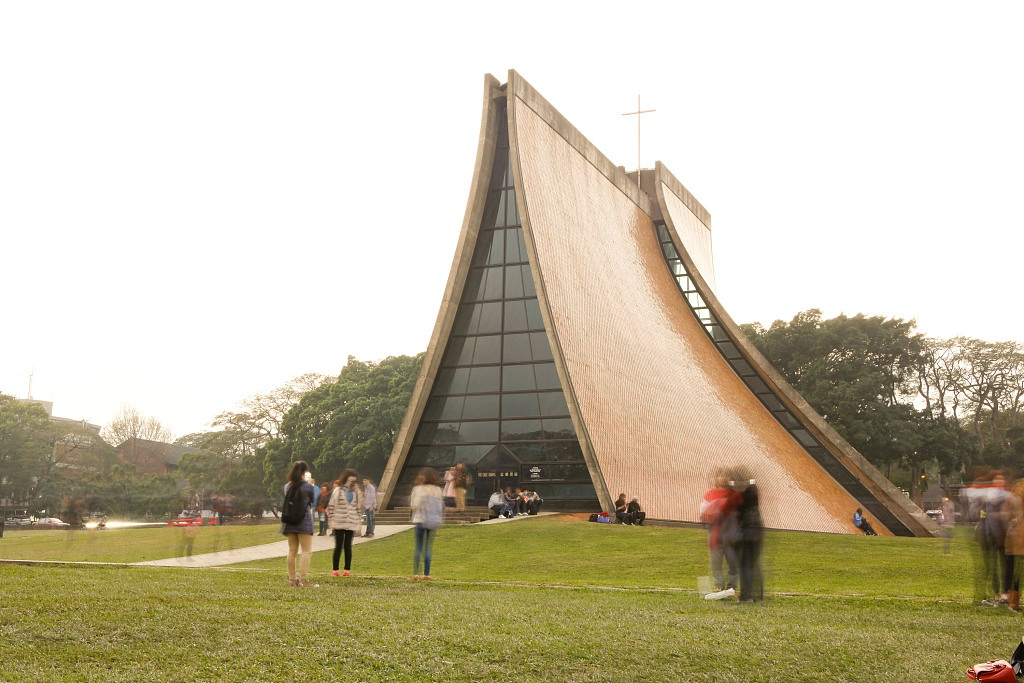
The Luce Memorial Chapel in Taichung City, Taiwan, southeast China. /VCG Photo
The Luce Memorial Chapel in Taichung City, Taiwan, southeast China. /VCG Photo
“I understand that time has changed, we have evolved. But I don't want to forget the beginning. A lasting architecture has to have roots,” Pei told New York Times during an interview in 2008.
I. M. Pei's designs also include the Kennedy Presidential Library and Museum in Boston, the Rock and Roll Hall of Fame in Cleveland, the Museum of Islamic Art in Doha, the Miho Museum in Japan's Kyoto…among hundreds of others.
During his life, he collected at least half of the American awards for architecture, including the Pritzker Prize, which is called the Nobel Prize of architecture.
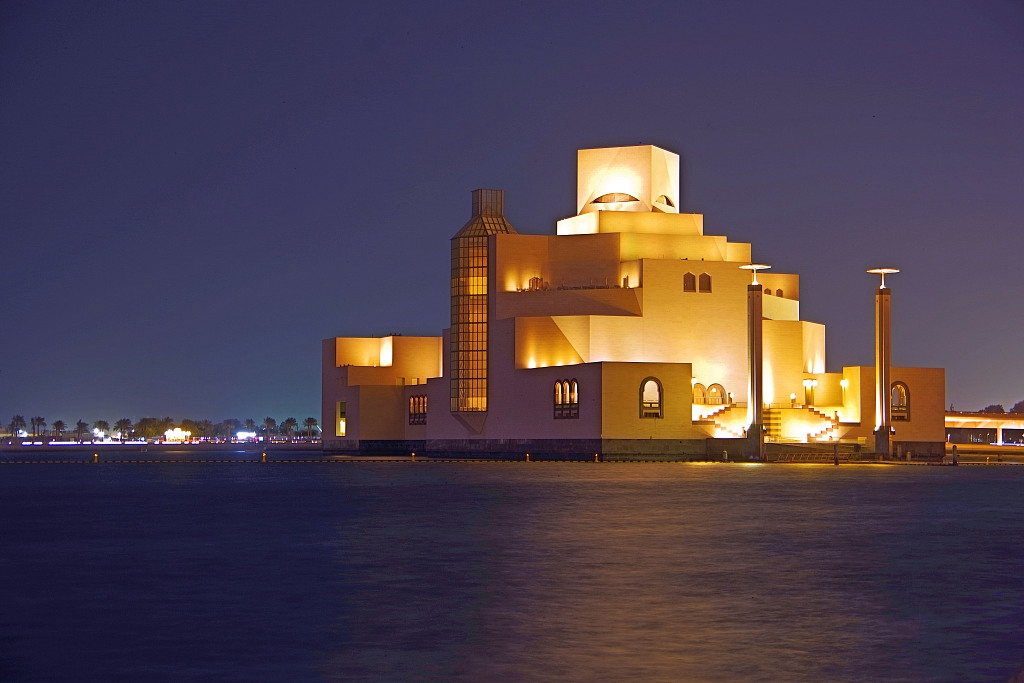
Museum of Islamic Art in Doha, Qatar. /VCG Photo
Museum of Islamic Art in Doha, Qatar. /VCG Photo
In the 102 years of his life, he has witnessed and experienced the change of times. In fact, with a number of landmarks that either decorated the skyline of modern cities or renewed the history of architecture, he was part of the changes.
His works, which have been proven to stand the test of time, will continue to exist, to be loved and admired, even when the creator is gone.
Cover image designed by Li Yueyun

SITEMAP
Copyright © 2018 CGTN. Beijing ICP prepared NO.16065310-3
Copyright © 2018 CGTN. Beijing ICP prepared NO.16065310-3